Citrus for Heart Health:
The vast majority of people have a general understanding that citrus fruits, such as oranges or lemons, can offer significant health benefits and are a good dietary choice for those interested in improving their health and longevity. However, not everyone has a comprehensive understanding about the true extent of impact that the consumption of citrus fruits can have on a person’s overall longevity and wellbeing.
With so many diverse facets of health being impacted and improved by the consumption of citrus, it can actually be a bit overwhelming trying to choose a specific topic to focus on. So I felt that it would be appropriate to address the number one #1 physiological system coveted as being the pentacle of longevity……The cardiovascular system….
The primary beneficial aspects of citrus consumption for heart health being:
- Vitamin C – (Collagen Maintenance – Stress relief)
- Antioxidant Protection – (Decreased Fat Oxidation)
- Blood Vessel & Arterial Function – (Improved Epithelial Health & Decreased Plaque)
- Decreased Inflammation- (Nrf-2 modulation – Inflammatory Cytokine suppression)
- Genome & DNA Health (Epigenetic Improvements)
- Citric Acid Chelation – (Reduced calcification of arteries and kidneys)
Each of these aspects of health, impacted by citrus consumption, offers its own uniquely profound implications on general longevity and wellbeing.
Vitamin C:
Given the fact that Oranges can provide more than 70 percent of the recommended daily value(1) of vitamin C in just 100 grams, with a long durable shelf-life(allowing widespread global availability at reasonable prices), it is no wonder why they are such a common sight in virtually every supermarket across the world.
Offering much higher concentrations of vitamin C than most of the other popular mainstream fruits; such as apples or bananas for example (which only offer a small fraction of the vitamin C content of citrus fruits), oranges are typically a good choice for getting adequate amounts of natural vitamin C at a reasonable cost, without having to resort to synthetic vitamin supplementation.
This a well-known nutritional fact, broadly understood amongst the general public; although I think, vastly underappreciated as well. As vitamin C has extremely important health implications(2) in human physiology, yet is widely under-consumed amongst a great number of communities.

Collagen Production
Due to the crucial role that vitamin C plays in the synthesis of collagen (3), vitamin C should be viewed as an extremely important key component for any person wishing to achieve cardiovascular efficiency and longevity.
Since collagen is one of the most important key protein building blocks vital for the structural integrity of basically every physiological system throughout the human body, the importance of proper collagen synthesis is critical for the optimal functioning of most organs and structures.
Vital structures such as the heart, the arteries, the veins(4), the kidneys, the lungs, the liver, and more, are all completely reliant and dependent on the proper formation of collagen. And since all of these organs work together synergistically in order to permit healthy cardiovascular functioning; it is important to ensure that healthy collagen formation is supported through adequate vitamin C consumption. An important element, commonly overlooked by those considering preventative health measures regarding cardiovascular health.
Stress Relief
Additionally, the consumption of vitamin C has proven to be a valuable dietary asset for the relief of psychological stress(5), a lifestyle factor which is infamous for being a major contributor to the development of various cardiovascular ailments.
With the highest concentrations of vitamin C throughout the body being stored in the brain(6) and in the adrenal glands(hormonal stress response system), it is clear that vitamin C plays an important role in the regulation of human stress in general. Specifically having significant impact on the neuromodulation(7) of various glutamatergic, dopaminergic, cholinergic, and GABAergic transmissions and the related behaviors that stem from their regulation.
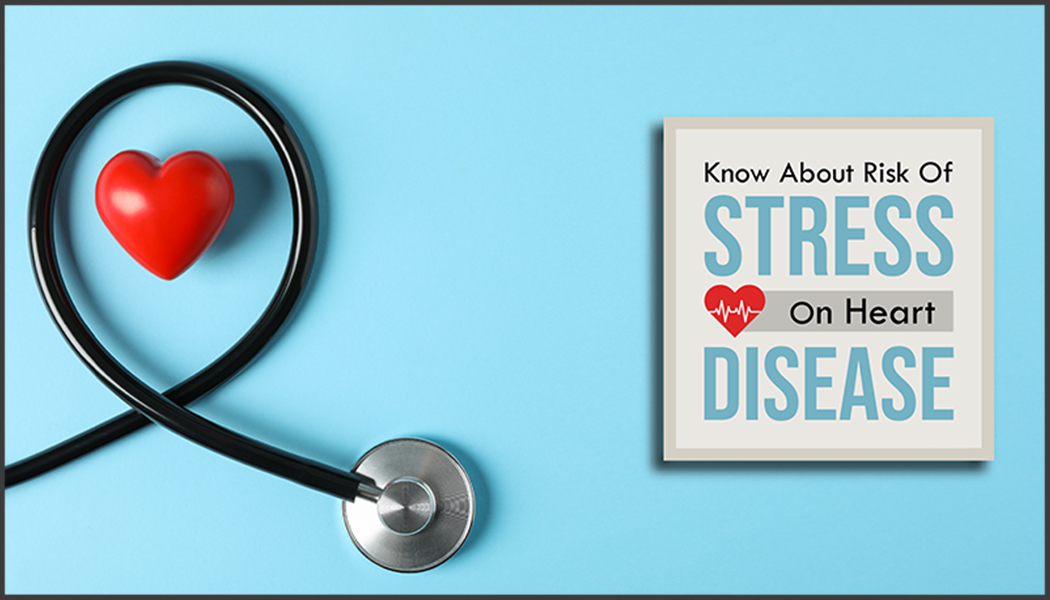
Since high levels of stress have shown to increase oxidative damage(8), create inflammation(9), and cause genetic damage(10) (DNA/RNA dysfunction), amongst other problems, the notion that stress prevention is crucial to maintain cardiovascular health is widely accepted among the vast majority of researchers and physicians.
As many cognitive impairments(11) and neurodegenerative disorders(12) are associated with excessive levels of oxidative stress, it is clear that controlling and minimizing oxidation and inflammation within the brain and nervous system through the consumption of adequate dietary vitamin C is important for achieving a desirable psychological state of health. Which ultimately plays a significant role in maintaining cardiovascular health and vitality.
Antioxidant Protection
In addition to the powerful impact(13) of vitamin C(14), each type of citrus fruit contains a unique blend of phytochemical compounds offering powerful antioxidant activity, including various polyphenols, carotenoids, and terpenes.
These potent antioxidant compounds have displayed significant ability to improve various health biomarkers which can directly impact cardiovascular functioning (15)
Take into consideration the flavonoid type of polyphenols for example, such as Hesperidin in oranges(16) or Naringin in grapefruits(16)). Or the terpene type phytonutrient called Limonene(17), found abundantly in lemons and limes. All of which displaying their own potent physiological antioxidant impacts
Decreased Fat Oxidation
One of the potential health benefits that can be offered by citrus polyphenols and terpenes is a decreased rate of lipid peroxidation(18) throughout the body, which means that their consumption is very beneficial to long term health and well-being since fat oxidation is a major contributing factor towards the development of cardiovascular disease.
This decrease in lipid peroxidation(19), caused by the consumption of citrus fruit is extremely beneficial to cardiovascular health because certain fats(lipids), such as cholesterol, are significantly more harmful and damaging to the cardiovascular system once they have been altered by oxidative damage(20). Which is crucial to understand for anyone concerned about preventing cardiovascular ailments because the accumulation of high concentrations of oxidized cholesterol derivatives, such as oxysterol, has shown to impair the function(21) of endothelial cells(artery walls) by creating inflammation and damage through the activation of excessive cytokine and macrophage activity in an exagerated immune system response that ultimately increases blood stream membrane permeability(22), exposing endothelium membranes to the penetration of lipids and consequently promoting the formation of foam cells(23), which directly exacerbate the progression of atherosclerosis.
This is in addition to the direct damage to heart cells that is caused by oxysterols. which may eventually culminate in final stage heart failure(24).
So controlling the amount of lipid peroxidation in our bodies through the intake of sufficient and diverse antioxidant sources is vital for the effective maintenance of optimal cardiovascular health.
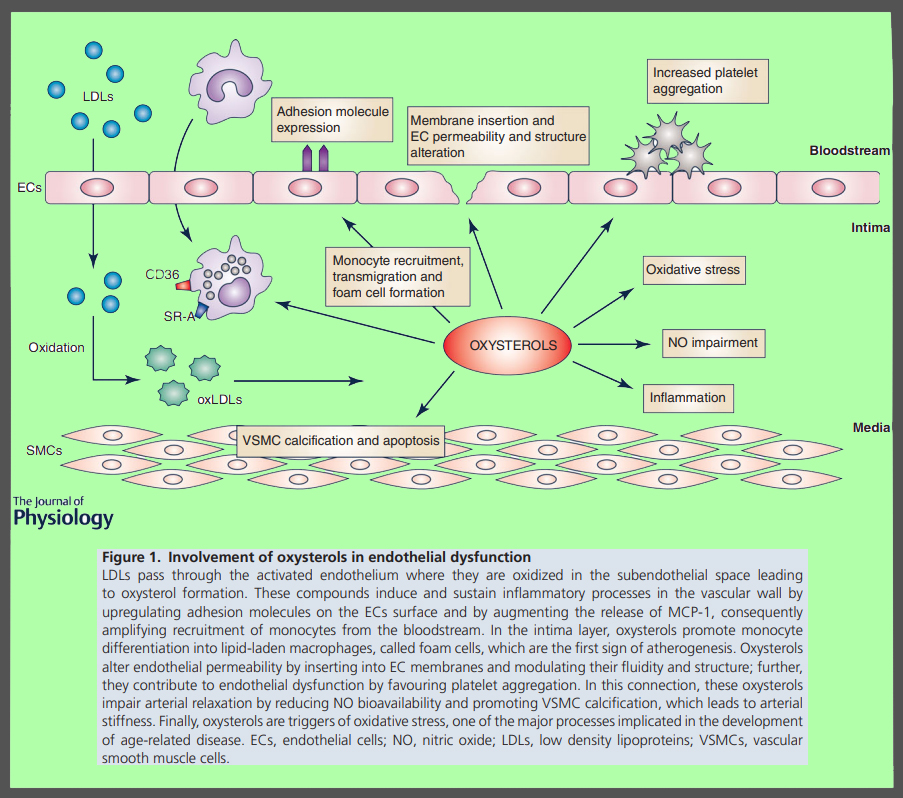
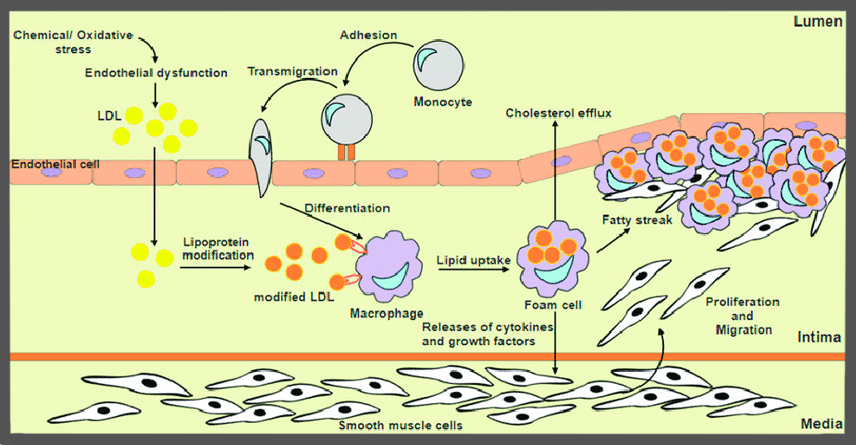
Blood Vessel and Arterial Function
Furthermore, these beneficial phytonutrients found within citrus fruit can also greatly contribute to the proper maintenance and function of artery and blood vessel health.
Improved Epithelial Health
For example Hesperidin (the predominant phytonutrient found in oranges), has proven to protect blood vessel health (25) and enhance arterial function due to its ability to improve endothelial performance.
Since various phytonutrient compounds in citrus have shown to increase nitrous oxide production(25) of endothelial cells, promoting vascular dilation and reducing inflammatory biomarkers; the consumption of citrus can be a valuable asset that can contribute to a person’s overall cardiovascular wellbeing.
And given the fact that hesperidin has shown to decrease aortic stiffness(26) in age-impacted arteries and blood vessels, it is reasonable to assume that the general risks for adverse cardiovascular events would also decrease as well as a direct result.
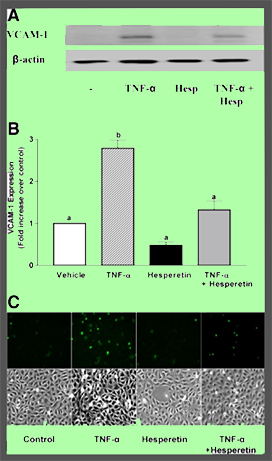
Decreased Plaque Accumulation
In regards to the actual formation of arterial plaque; the term “thrombocyte platelet aggregation” refers to the clumping together of blood platelets, which are the small blood cells which are commonly involved in blood clotting,
This physiological mechanism can be a major contributing factor towards the developments of arterial plaque deposits which characterize various cardiovascular diseases.
This excessive platelet aggregation can directly contribute to the formation of blood clots and fat-based plaque deposits in arteries, which directly leads to a higher risk of cardiovascular events such heart attacks and strokes.
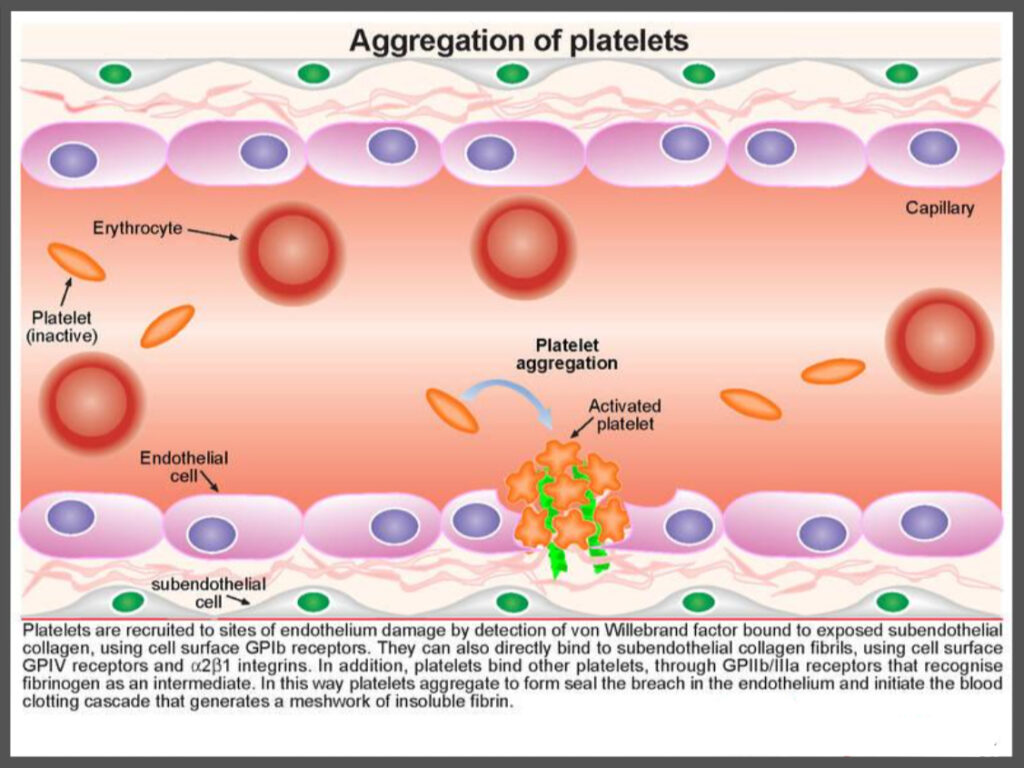
So, since certain phytonutrients(27) and organic acids(28) found in citrus have shown to decrease platelet aggregation(29) a key mechanism responsible for promoting the accumulation of harmful artery plaques), the consumption of fruits or juices can directly decrease the risk of adverse cardiovascular events as a result of its interferences with platelet signaling pathways, including the inhibition of platelet adhesion molecules and the suppression of platelet release reactions.
Decreased Hypertension
Also, hypertension (or high blood pressure) is another common contributing factor to adverse cardiovascular events. With chronic long term periods of high blood pressure creating strain on the heart muscle and potentially causing damage to arteries and blood vessels.
Althoough, due to the fact that certain phytonutrients in citrus fruit have shown to promote vasodilation and blood vessel relaxation(30); the consumption on citrus fruits and juices can significantly help to reduce blood pressure(31) in individuals experiencing symptoms of hypertension. Ultimately lowering overall risk factors for the development of more serious complications.

Decreased Inflammation
Additionally, another primary contributing factor to the deterioration of cardiovascular health is the presence of excessive inflammation(32) throughout the body; as inflammation can disrupt several signaling pathways(33) and intracellular communication mechanisms at the molecular level, ultimately creating detrimental dysfunction of various physiological mechanisms within the cardiovascular system.
Which can be effectively ameliorated through frequent citrus consumption due to the high concentrations of hesperidin found in oranges and tangerines.
Given hesperidin’s impressive ability to modulate Nrf-2(34) transcription factors (an important intracellular communication molecule) and increase the production of various endogenous antioxidant(35) enzymes(such as glutathione-GPx and superoxide dismutase-SOD), the consumption of citrus fruits and juices can directly protect the cell-walls of arteries from being damaged by oxidative stress and over-active immune cells(36), that can often result from excessive cytokine signaling(37)(commonly caused by high levels of inflation).
So due to the fact that Nrf-2 has direct regulatory impact on cytokine signaling; hesperidin’s impact on Nrf-2 expression is an effective alleviator of vascular distress commonly caused by systematic inflammation and immune system malfunction.
This is a very important because the vascular damage that is caused by the over-activity of immune cells can cause a chain reaction of molecular events that ultimately results in increased membrane permeability and amplified plaque accumulation from increased particle adhesion(38) within arteries and blood vessels. Which if gone unchecked, can eventually develop into atherosclerosis.
Genome and DNA Health
Similar to almost every other biological system and process on earth, the human cardiovascular system is heavily reliant and dependent on proper genetic functioning of DNA and RNA and their relevant transcription factors. With damaged mitochondrial DNA(39) proving to be an important potential contributing factor in the development and progression of various cardiovascular diseases.
This is because DNA contains the instructions for the production of all necessary proteins and molecules involved in cardiovascular functioning, such as relevant enzymes, receptors, and structural proteins. Including those responsible for blood vessel dilation, constriction, and inflammation. Which ultimately support the repair and regeneration of aging blood vessels.
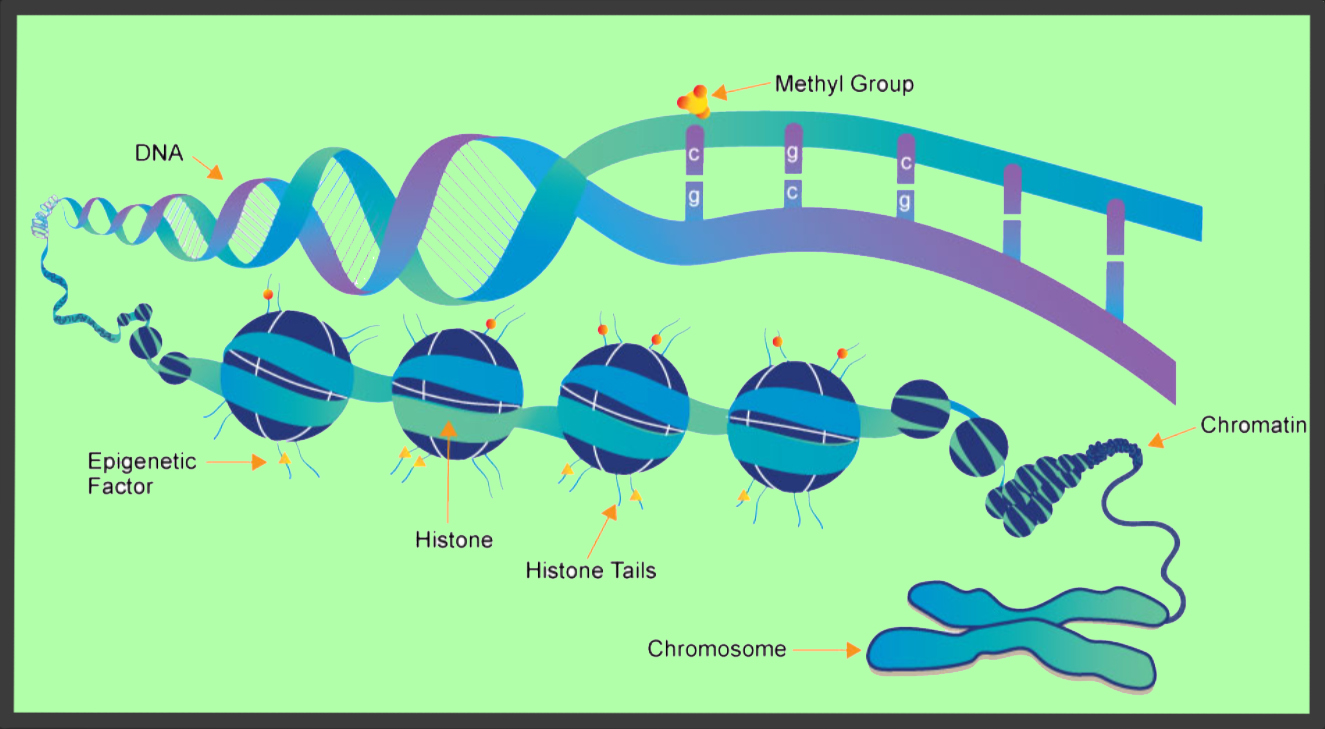
So the maintenance of healthy DNA function ensures the proper regulation of gene expression and allows for the appropriate synthesis of these cardiovascular-related molecules
Which is important because multiple bioactive phytonutrients in citrus, such as hesperidin(40) or limonene(41), have shown to display DNA-protective(42) properties and display epigenetic impact on cellular health(43) so it becomes quite clear that citrus consumption can offer substantial genetic benefits to long term cardiovascular health and vitality as well.
Citric Acid Chelation / Anti-calcification
Finally, on a more abstract note, I would like to mention one compound in particular which I believe is highly underestimated and underappreciated among the general public. Which is Citric Acid.
It is the most abundant organic acid commonly found in all citrus fruits, often over-looked in regards to its nutritional impact and health implications.
Commonly used in plumbing and cleaning products for its ability to remove calcium based mineral deposits on various surfaces that are in frequent contact with hard-water flows; the natural version found in citrus fruits actually has a similar ability(44) to bind to excess calcium and remove it from the body.
This is so important in relation to heart health because of the major role that calcium often plays in the formation of arterial plaque deposits. With higher arterial calcification(45) scores showing heavy correlation with increased risk for adverse cardiovascular events.
Yet, given the very long term and subtle nature of calcium deposition in arteries, the amount of definitive citrate research performed on human subjects’ remains limited due to the high cost and impracticality of performing such long term human trials with all of the variable controls involved.
Although there are a few compelling studies available which have shown promising results in their research results: such as one study performed on 18 hemodialysis patients showing a substantial reduction in the amount of arterial calcification(46) accumulated after one week of treatment with citric acid treated dialysis fluid.
Plu,s other studies have shown citric acids value in the decalcification of thyroids(47) or in the decalcification of the kidneys(48), in short term trials.
Conclusion
So, in conclusion, we can confidently ascertain the fact that many of the known health benefits provided by citrus fruits can be attributed to the abundant amounts of phytonutrients and organic acids found within the pulp and juice..
With each phytochemical compound offering its own unique mechanisms of actions, greatly beneficial to many of our various biological processes.
These nutrients have shown to have profound effects on cardiovascular function and have proven to work together synergistically with each-other in order to improve the overall functioning of our bodies’ natural endogenous detoxification pathways and to ultimately facilitate an increase in our capacity for regenerative healing.
And thankfully, the vast majority of people have the access and ability to experience these impressive health boosting properties of their unique blends nutrients found in so many citrus fruits around the world.
References
1.)Abdullah M, Jamil RT, Attia FN. Vitamin C (Ascorbic Acid) [Updated 2022 Oct 25]. In: StatPearls [Internet]. Treasure Island (FL): StatPearls Publishing; 2022 Jan-. Available from: https://www.ncbi.nlm.nih.gov/books/NBK499877/ **URL HyperLink: Vitamin C (Ascorbic Acid) – StatPearls – NCBI Bookshelf (nih.gov)
2.) De Marchi, S., Prior, M., Rigoni, A., Zecchetto, S., Rulfo, F., & Arosio, E. (2012). Ascorbic acid prevents vascular dysfunction induced by oral glucose load in healthy subjects. European journal of internal medicine, 23(1), 54–57. https://doi.org/10.1016/j.ejim.2011.07.019 Ascorbic acid prevents vascular dysfunction induced by oral glucose load in healthy subjects – PubMed (nih.gov)
3.) Pinnell SR. Regulation of collagen biosynthesis by ascorbic acid: a review. Yale J Biol Med. 1985;58(6):553-559Regulation of collagen biosynthesis by ascorbic acid: a review. – PMC (nih.gov)
*****Sodek, J., Feng, J., Yen, E. H., & Melcher, A. H. (1982). Effect of ascorbic acid on protein synthesis and collagen hydroxylation in continuous flow organ cultures of adult mouse periodontal tissues. Calcified tissue international, 34(4), 408–415. https://doi.org/10.1007/BF02411276 : Effect of ascorbic acid on protein synthesis and collagen hydroxylation in continuous flow organ cultures of adult mouse periodontal tissues – PubMed (nih.gov)
4.) S. Katsuda, Y. Okada, T. Minamoto, Collagens in human atherosclerosis. Immunohistochemical analysis using collagen type-specific antibodies1 Apr, 1992 Arteriosclerosis and Thrombosis: A Journal of Vascular Biology. 1992;12:494–502 Collagens in human atherosclerosis. Immunohistochemical analysis using collagen type-specific antibodies. | Arteriosclerosis and Thrombosis: A Journal of Vascular Biology (ahajournals.org)
5.) Moritz, B., Schmitz, A. E., Rodrigues, A. L. S., Dafre, A. L., & Cunha, M. P. (2020). The role of vitamin C in stress-related disorders. The Journal of nutritional biochemistry, 85, 108459. https://doi.org/10.1016/j.jnutbio.2020.108459 The role of vitamin C in stress-related disorders – PubMed (nih.gov)
6.) Harrison FE, Bowman GL, Polidori MC. Ascorbic acid and the brain: rationale for the use against cognitive decline. Nutrients. 2014; https://doi.org/10.3390%2Fnu6041752: Ascorbic Acid and the Brain: Rationale for the Use against Cognitive Decline – PMC (nih.gov)
7) Harrison, F. E., & May, J. M. (2009). Vitamin C function in the brain: vital role of the ascorbate transporter SVCT2. Free radical biology & medicine, 46(6), 719–730. https://doi.org/10.1016/j.freeradbiomed.2008.12.018 Vitamin C function in the brain: vital role of the ascorbate transporter SVCT2 – PubMed (nih.gov)
8.) Kirstin Aschbacher, Aoife O’Donovan, Owen M. Wolkowitz, Firdaus S. Dhabhar, Yali Su, Elissa Epel, Good stress, bad stress and oxidative stress: Insights from anticipatory cortisol reactivity, Psychoneuroendocrinology, Volume 38, Issue 9,2013,Pages 1698-1708, https://doi.org/10.1016/j.psyneuen.2013.02.004. Good stress, bad stress and oxidative stress: Insights from anticipatory cortisol reactivity – ScienceDirect
9.) Dowlati, Y., Herrmann, N., Swardfager, W., Liu, H., Sham, L., Reim, E. K., & Lanctôt, K. L. (2010). A meta-analysis of cytokines in major depression. Biological psychiatry, 67(5), 446–457. https://doi.org/10.1016/j.biopsych.2009.09.033 A meta-analysis of cytokines in major depression – PubMed (nih.gov)
10.) Lin J, Epel E. Stress and telomere shortening: Insights from cellular mechanisms. Ageing Res Rev. 2022;73:101507. doi:10.1016/j.arr.2021.101507 Stress and telomere shortening: Insights from cellular mechanisms – PMC (nih.gov)
11.) Lu Z, Pu C, Zhang Y, et al. Oxidative Stress and Psychiatric Disorders: Evidence from the Bidirectional Mendelian Randomization Study. Antioxidants (Basel). 2022;11(7):1386. Published 2022 Jul 18. doi:10.3390/antiox11071386 Oxidative Stress and Psychiatric Disorders: Evidence from the Bidirectional Mendelian Randomization Study – PMC (nih.gov)
12.) Li Gan, Jeffrey A. Johnson, Oxidative damage and the Nrf2-ARE pathway in neurodegenerative diseases, Biochimica et Biophysica Acta (BBA) – Molecular Basis of Disease,Volume 1842, Issue 8,2014 https://doi.org/10.1016/j.bbadis.2013.12.011.(https://www.sciencedirect.com/science/article/pii/S0925443913003669)
13.)Siow, R. C., Richards, J. P., Pedley, K. C., Leake, D. S., & Mann, G. E. (1999). Vitamin C protects human vascular smooth muscle cells against apoptosis induced by moderately oxidized LDL containing high levels of lipid hydroperoxides. Arteriosclerosis, thrombosis, and vascular biology, 19(10), 2387–2394. https://doi.org/10.1161/01.atv.19.10.2387 Vitamin C protects human vascular smooth muscle cells against apoptosis induced by moderately oxidized LDL containing high levels of lipid hydroperoxides – PubMed (nih.gov)
14.)Yi Li, Herb E. Schellhorn, New Developments and Novel Therapeutic Perspectives for Vitamin C1,2, The Journal of Nutrition, Volume 137, Issue 10, 2007, Pages 2171-2184, https://doi.org/10.1093/jn/137.10.2171. (https://www.sciencedirect.com/science/article/pii/S0022316622093816)
15.)Patel, K. D., Zimmerman, G. A., Prescott, S. M., McEver, R. P., & McIntyre, T. M. (1991). Oxygen radicals induce human endothelial cells to express GMP-140 and bind neutrophils. The Journal of cell biology, 112(4), 749–759. Oxygen radicals induce human endothelial cells to express GMP-140 and bind neutrophils – PubMed (nih.gov)
16.) Mahmoud AM, Hernández Bautista RJ, Sandhu MA, Hussein OE. Beneficial Effects of Citrus Flavonoids on Cardiovascular and Metabolic Health. Oxid Med Cell Longev. 2019;2019:5484138. Published 2019 Mar 10. doi:10.1155/2019/5484138 Beneficial Effects of Citrus Flavonoids on Cardiovascular and Metabolic Health – PMC (nih.gov)
17.) Anandakumar, P., Kamaraj, S., & Vanitha, M. K. (2021). D-limonene: A multifunctional compound with potent therapeutic effects. Journal of food biochemistry, 45(1), e13566. https://doi.org/10.1111/jfbc.13566D-limonene: A multifunctional compound with potent therapeutic effects – PubMed (nih.gov)
18.) Homayouni, F., Haidari, F., Hedayati, M., Zakerkish, M., & Ahmadi, K. (2017). Hesperidin Supplementation Alleviates Oxidative DNA Damage and Lipid Peroxidation in Type 2 Diabetes: A Randomized Double-Blind Placebo-Controlled Clinical Trial. Phytotherapy research : PTR, 31(10), 1539–1545. https://doi.org/10.1002/ptr.5881 Hesperidin Supplementation Alleviates Oxidative DNA Damage and Lipid Peroxidation in Type 2 Diabetes: A Randomized Double-Blind Placebo-Controlled Clinical Trial – PubMed (nih.gov)
19.) Selvaraj P, Pugalendi KV. Hesperidin, a flavanone glycoside, on lipid peroxidation and antioxidant status in experimental myocardial ischemic rats. Redox Rep. 2010;15(5):217-223. doi:10.1179/135100010X12826446921509Hesperidin, a flavanone glycoside, on lipid peroxidation and antioxidant status in experimental myocardial ischemic rats – PMC (nih.gov)
20.) Zhang, P. Y., Xu, X., & Li, X. C. (2014). Cardiovascular diseases: oxidative damage and antioxidant protection. European review for medical and pharmacological sciences, 18(20), 3091–3096. Department of Cardiology, Xuzhou Hospital, Cardiovascular diseases: oxidative damage and antioxidant protection – PubMed (nih.gov)
21.) Waldemar T. Kulig, Heikki Mikkolainen, Agnieszka Olzynska, Piotr Jurkiewicz, Lukasz Cwiklik, Tomasz Rog, Martin Hof, Ilpo Vattulainen, Pavel Jungwirth, Oxidation of Cholesterol Changes the Permeability of Lipid Membranes,Biophysical Journal, Volume 112, Issue 3, 2017, https://doi.org/10.1016/j.bpj.2016.11.2047 Oxidation of Cholesterol Changes the Permeability of Lipid Membranes – ScienceDirect
22.) Mundi S, Massaro M, Scoditti E, et al. Endothelial permeability, LDL deposition, and cardiovascular risk factors-a review. Cardiovasc Res. 2018;114(1):35-52. doi:10.1093/cvr/cvx226 Endothelial permeability, LDL deposition, and cardiovascular risk factors—a review – PMC (nih.gov)
23.) Chistiakov, D. A., Melnichenko, A. A., Myasoedova, V. A., Grechko, A. V., & Orekhov, A. N. (2017). Mechanisms of foam cell formation in atherosclerosis. Journal of molecular medicine (Berlin, Germany), 95(11), 1153–1165. https://doi.org/10.1007/s00109-017-1575-8 Mechanisms of foam cell formation in atherosclerosis – PubMed (nih.gov)
24.) Lukyanenko, V., & Lukyanenko, Y. (2009). Oxysterols in heart failure. Future cardiology, 5(4), 343–354. https://doi.org/10.2217/fca.09.17Oxysterols in heart failure – PubMed (nih.gov)
25.) Rizza S, Muniyappa R, Iantorno M, et al. Citrus polyphenol hesperidin stimulates production of nitric oxide in endothelial cells while improving endothelial function and reducing inflammatory markers in patients with metabolic syndrome. J Clin Endocrinol Metab. 2011;96(5):E782-E792. doi:10.1210/jc.2010-2879 Citrus Polyphenol Hesperidin Stimulates Production of Nitric Oxide in Endothelial Cells while Improving Endothelial Function and Reducing Inflammatory Markers in Patients with Metabolic Syndrome – PMC (nih.gov)
26.) Ouyang, A., Garner, T. B., & Fleenor, B. S. (2017). Hesperidin reverses perivascular adipose-mediated aortic stiffness with aging. Experimental gerontology, 97, 68–72. https://doi.org/10.1016/j.exger.2017.08.003 Hesperidin reverses perivascular adipose-mediated aortic stiffness with aging – PMC (nih.gov)
27.) Yu, H. Y., Park, S. W., Chung, I. M., & Jung, Y. S. (2011). Anti-platelet effects of yuzu extract and its component. Food and chemical toxicology : an international journal published for the British Industrial Biological Research Association, 49(12), 3018–3024. https://doi.org/10.1016/j.fct.2011.09.038 Anti-platelet effects of yuzu extract and its component – PubMed (nih.gov)
28.) Tang X, Liu J, Dong W, et al. The cardioprotective effects of citric Acid and L-malic Acid on myocardial ischemia/reperfusion injury. Evid Based Complement Alternat Med. 2013;2013:820695. doi:10.1155/2013/820695 The Cardioprotective Effects of Citric Acid and L-Malic Acid on Myocardial Ischemia/Reperfusion Injury – PMC (nih.gov)
29.) Jin, Y. R., Han, X. H., Zhang, Y. H., Lee, J. J., Lim, Y., Chung, J. H., & Yun, Y. P. (2007). Antiplatelet activity of hesperetin, a bioflavonoid, is mainly mediated by inhibition of PLC-gamma2 phosphorylation and cyclooxygenase-1 activity. Atherosclerosis, 194(1), 144–152. https://doi.org/10.1016/j.atherosclerosis.2006.10.011 Antiplatelet activity of hesperetin, a bioflavonoid, is mainly mediated by inhibition of PLC-gamma2 phosphorylation and cyclooxygenase-1 activity – PubMed (nih.gov)
30.) Clinton R. Webb, Carolina Martins Lazaro, Fernanda Priviero, Tiago Tomazini Goncalves, Vasoprotective Effect of Hesperidin in the Onset of Arterial Hypertension Induced by L-NAME, volume 70, issue 2, AHA Journals, Hypertension: 2017 https://doi.org/10.1161/hyp.70.suppl_1.p524 Abstract P524: Vasoprotective Effect of Hesperidin in the Onset of Arterial Hypertension Induced by L-NAME | Hypertension (ahajournals.org)
31.) Homayouni, F., Haidari, F., Hedayati, M., Zakerkish, M., & Ahmadi, K. (2018). Blood pressure lowering and anti-inflammatory effects of hesperidin in type 2 diabetes; a randomized double-blind controlled clinical trial. Phytotherapy research : PTR, 32(6), 1073–1079. https://doi.org/10.1002/ptr.6046 Blood pressure lowering and anti‐inflammatory effects of hesperidin in type 2 diabetes; a randomized double‐blind controlled clinical trial – Homayouni – 2018 – Phytotherapy Research – Wiley Online Library
32.) Galkina E, Ley K. Immune and inflammatory mechanisms of atherosclerosis (*). Annu Rev Immunol. 2009;27:165-197. doi:10.1146/annurev.immunol.021908.132620 Immune and Inflammatory Mechanisms of Atherosclerosis – PMC (nih.gov)
33.) Kong, P., Cui, ZY., Huang, XF. et al. Inflammation and atherosclerosis: signaling pathways and therapeutic intervention. Sig Transduct Target Ther 7, 131 (2022). https://doi.org/10.1038/s41392-022-00955-7 Inflammation and atherosclerosis: signaling pathways and therapeutic intervention | Signal Transduction and Targeted Therapy (nature.com)
34.) Heo, S. D., Kim, J., Choi, Y., Ekanayake, P., Ahn, M., & Shin, T. (2020). Hesperidin improves motor disability in rat spinal cord injury through anti-inflammatory and antioxidant mechanism via Nrf-2/HO-1 pathway. Neuroscience letters, 715, 134619. https://doi.org/10.1016/j.neulet.2019.134619 Hesperidin improves motor disability in rat spinal cord injury through anti-inflammatory and antioxidant mechanism via Nrf-2/HO-1 pathway – PubMed (nih.gov)
35.) Li, Jingda and Wang, Tianqi and Liu, Panpan and Yang, Fuyuan and Wang, Xudong and Zheng, Weilong and Sun, Wenlong. Hesperetin ameliorates hepatic oxidative stress and inflammation via the PI3K/AKT-Nrf2-ARE pathway in oleic acid-induced HepG2 cells and a rat model of high-fat diet-induced NAFLD, Food & Function Journal, 2021, volume 12, issue 9, 3898-3918, The Royal Society of Chemistry, http://dx.doi.org/10.1039/D0FO02736G Hesperetin ameliorates hepatic oxidative stress and inflammation via the PI3K/AKT-Nrf2-ARE pathway in oleic acid-induced HepG2 cells and a rat model of high-fat diet-induced NAFLD – Food & Function (RSC Publishing)
36.) Swirski FK, Nahrendorf M. Leukocyte behavior in atherosclerosis, myocardial infarction, and heart failure. Science. 2013;339(6116):161-166. doi:10.1126/science.1230719 Leukocyte behavior in atherosclerosis, myocardial infarction, and heart failure – PMC (nih.gov)
37.) Kobayashi EH, Suzuki T, Funayama R, et al. Nrf2 suppresses macrophage inflammatory response by blocking proinflammatory cytokine transcription. Nat Commun. 2016;7:11624. Published 2016 May 23. doi:10.1038/ncomms11624 Nrf2 suppresses macrophage inflammatory response by blocking proinflammatory cytokine transcription – PMC (nih.gov)
38.) Stefan Blankenberg, Sandrine Barbaux, Laurence Tiret Adhesion molecules and atherosclerosis, Atherosclerosis, Volume 170, Issue 2, 191 – 203 https://doi.org/10.1016/S0021-9150(03)00097-2 Adhesion molecules and atherosclerosis – Atherosclerosis (atherosclerosis-journal.com)
39.) Ding, Y., Gao, B. B., & Huang, J. Y. (2020). The role of mitochondrial DNA mutations in coronary heart disease. European review for medical and pharmacological sciences, 24(16), 8502–8509. https://doi.org/10.26355/eurrev_202008_22647 The role of mitochondrial DNA mutations in coronary heart disease (europeanreview.org)
40.) Aksu, E. H., Kandemir, F. M., & Küçükler, S. (2021). Ameliorative effect of hesperidin on streptozotocin-diabetes mellitus-induced testicular DNA damage and sperm quality degradation in Sprague-Dawley rats. Journal of food biochemistry, 45(10), e13938. https://doi.org/10.1111/jfbc.13938 Ameliorative effect of hesperidin on streptozotocin‐diabetes mellitus‐induced testicular DNA damage and sperm quality degradation in Sprague–Dawley rats – Aksu – 2021 – Journal of Food Biochemistry – Wiley Online Library
41.) Verma, N., Yadav, A., Bal, S. et al. In Vitro Studies on Ameliorative Effects of Limonene on Cadmium-Induced Genotoxicity in Cultured Human Peripheral Blood Lymphocytes. Appl Biochem Biotechnol 187, 1384–1397 (2019). https://doi.org/10.1007/s12010-018-2881-5 In Vitro Studies on Ameliorative Effects of Limonene on Cadmium-Induced Genotoxicity in Cultured Human Peripheral Blood Lymphocytes | SpringerLink
42.) Jin, S., Zhou, B. & Luo, D. Hesperidin promotes cyclobutane pyrimidine dimer repair in UVB-exposed mice epidermis. Ir J Med Sci 180, 709–714 (2011). https://doi.org/10.1007/s11845-010-0503-5 Hesperidin promotes cyclobutane pyrimidine dimer repair in UVB-exposed mice epidermis | SpringerLink
43.) Kalpana, K.B., Srinivasan, M. & Menon, V.P. Evaluation of antioxidant activity of hesperidin and its protective effect on H2O2 induced oxidative damage on pBR322 DNA and RBC cellular membrane. Mol Cell Biochem 323, 21–29 (2009). https://doi.org/10.1007/s11010-008-9960-9
44) Köse, N., Aytaçoğlu, B. N., Yilmaz, N., Döndaş, H. A., Tamer, L., Coşkun, B., Vezir, O., Sucu, N., & Dikmengil, M. (2008). Citric acid as a decalcifying agent for the excised calcified human heart valves. Anadolu kardiyoloji dergisi : AKD = the Anatolian journal of cardiology, 8(2), 94–98. Citric acid as a decalcifying agent for the excised calcified human heart valves – PubMed (nih.gov)
45.) Jay Mohan1; Karan Bhatti2; Adam Tawney3; Roman Zeltser4. 1 Michigan State University 2 University of Texas, 3 Beaumont Hospital4 Hofstra Northwell School of Medicine – Coronary Artery Calcification – StatPearls – NCBI Bookshelf (nih.gov)
46.) Ter Meulen KJ, Dekker MJE, Pasch A, et al. Citric-acid dialysate improves the calcification propensity of hemodialysis patients: A multicenter prospective randomized cross-over trial. PLoS One. 2019;14(12):e0225824. Published 2019 Dec 5. doi:10.1371/journal.pone.0225824 Citric-acid dialysate improves the calcification propensity of hemodialysis patients: A multicenter prospective randomized cross-over trial – PMC (nih.gov)
47.) Foschini, M. P., & Muzzi, L. (1993). A method for decalcification with citric acid. Biotechnic & histochemistry : official publication of the Biological Stain Commission, 68(1), 42–45. https://doi.org/10.3109/10520299309105576 A Method for Decalcification with Citric Acid: Biotechnic & Histochemistry: Vol 68, No 1 (tandfonline.com)
48.) Goldberg H, Grass L, Vogl R, Rapoport A, Oreopoulos DG. Urine citrate and renal stone disease. CMAJ. 1989;141(3):217-221. Urine citrate and renal stone disease. – PMC (nih.gov)
++Additional Reading
** Testai L, Calderone V. Nutraceutical Value of Citrus Flavanones and Their Implications in Cardiovascular Disease. Nutrients. 2017;9(5):502. Published 2017 May 16. doi:10.3390/nu9050502Nutraceutical Value of Citrus Flavanones and Their Implications in Cardiovascular Disease – PMC (nih.gov)
** Xiong H, Wang J, Ran Q, et al. Hesperidin: A Therapeutic Agent For Obesity. Drug Des Devel Ther. 2019;13:3855-3866. Published 2019 Nov 12. doi:10.2147/DDDT.S227499Hesperidin: A Therapeutic Agent For Obesity – PMC (nih.gov)
** Lv X, Zhao S, Ning Z, et al. Citrus fruits as a treasure trove of active natural metabolites that potentially provide benefits for human health. Chem Cent J. 2015;9:68. Published 2015 Dec 24. doi:10.1186/s13065-015-0145-9 Citrus fruits as a treasure trove of active natural metabolites that potentially provide benefits for human health – PMC (nih.gov)
** Mas-Capdevila A, Teichenne J, Domenech-Coca C, et al. Effect of Hesperidin on Cardiovascular Disease Risk Factors: The Role of Intestinal Microbiota on Hesperidin Bioavailability. Nutrients. 2020;12(5):1488. Published 2020 May 20. doi:10.3390/nu12051488 Effect of Hesperidin on Cardiovascular Disease Risk Factors: The Role of Intestinal Microbiota on Hesperidin Bioavailability – PMC (nih.gov)
** Miles EA, Calder PC. Effects of Citrus Fruit Juices and Their Bioactive Components on Inflammation and Immunity: A Narrative Review. Front Immunol. 2021;12:712608. Published 2021 Jun 24. doi:10.3389/fimmu.2021.712608 URL Hyperlink: Effects of Citrus Fruit Juices and Their Bioactive Components on Inflammation and Immunity: A Narrative Review – PMC (nih.gov)
** Homayouni, F., Haidari, F., Hedayati, M., Zakerkish, M., & Ahmadi, K. (2018). Blood pressure lowering and anti-inflammatory effects of hesperidin in type 2 diabetes; a randomized double-blind controlled clinical trial. Phytotherapy research : PTR, 32(6), 1073–1079. https://doi.org/10.1002/ptr.6046 Blood pressure lowering and anti-inflammatory effects of hesperidin in type 2 diabetes; a randomized double-blind controlled clinical trial – PubMed (nih.gov)
** Choe, S. C., Kim, H. S., Jeong, T. S., Bok, S. H., & Park, Y. B. (2001). Naringin has an antiatherogenic effect with the inhibition of intercellular adhesion molecule-1 in hypercholesterolemic rabbits. Journal of cardiovascular pharmacology, 38(6), 947–955. https://doi.org/10.1097/00005344-200112000-00017Naringin has an antiatherogenic effect with the inhibition of intercellular adhesion molecule-1 in hypercholesterolemic rabbits – PubMed (nih.gov)
** Xianchu, L., Lan, P. Z., Qiufang, L., Yi, L., Xiangcheng, R., Wenqi, H., & Yang, D. (2016). Naringin protects against lipopolysaccharide-induced cardiac injury in mice. Environmental toxicology and pharmacology, 48, 1–6. https://doi.org/10.1016/j.etap.2016.09.005Naringin protects against lipopolysaccharide-induced cardiac injury in mice – PubMed (nih.gov)
** Huang M, Deng M, Nie W, Zou D, Wu H, Xu D. Naringenin Inhibits Platelet Activation and Arterial Thrombosis Through Inhibition of Phosphoinositide 3-Kinase and Cyclic Nucleotide Signaling. Front Pharmacol. 2021;12:722257. Published 2021 Aug 12. doi:10.3389/fphar.2021.722257Naringenin Inhibits Platelet Activation and Arterial Thrombosis Through Inhibition of Phosphoinositide 3-Kinase and Cyclic Nucleotide Signaling – PMC (nih.gov)
** Den Hartogh DJ, Tsiani E. Antidiabetic Properties of Naringenin: A Citrus Fruit Polyphenol. Biomolecules. 2019; 9(3):99. Biomolecules | Free Full-Text | Antidiabetic Properties of Naringenin: A Citrus Fruit Polyphenol (mdpi.com)
** Pontifex, Matthew G. and Malik, Mohammad M. A. H. and Connell, Emily and Müller, Michael and Vauzour, David (2021) Citrus Polyphenols in Brain Health and Disease: Current Perspectives. Frontiers in Neuroscience, volume 15, 1662-453X. https://www.frontiersin.org/articles/10.3389/fnins.2021.640648 **URL Hyperlink: Frontiers | Citrus Polyphenols in Brain Health and Disease: Current Perspectives (frontiersin.org)
